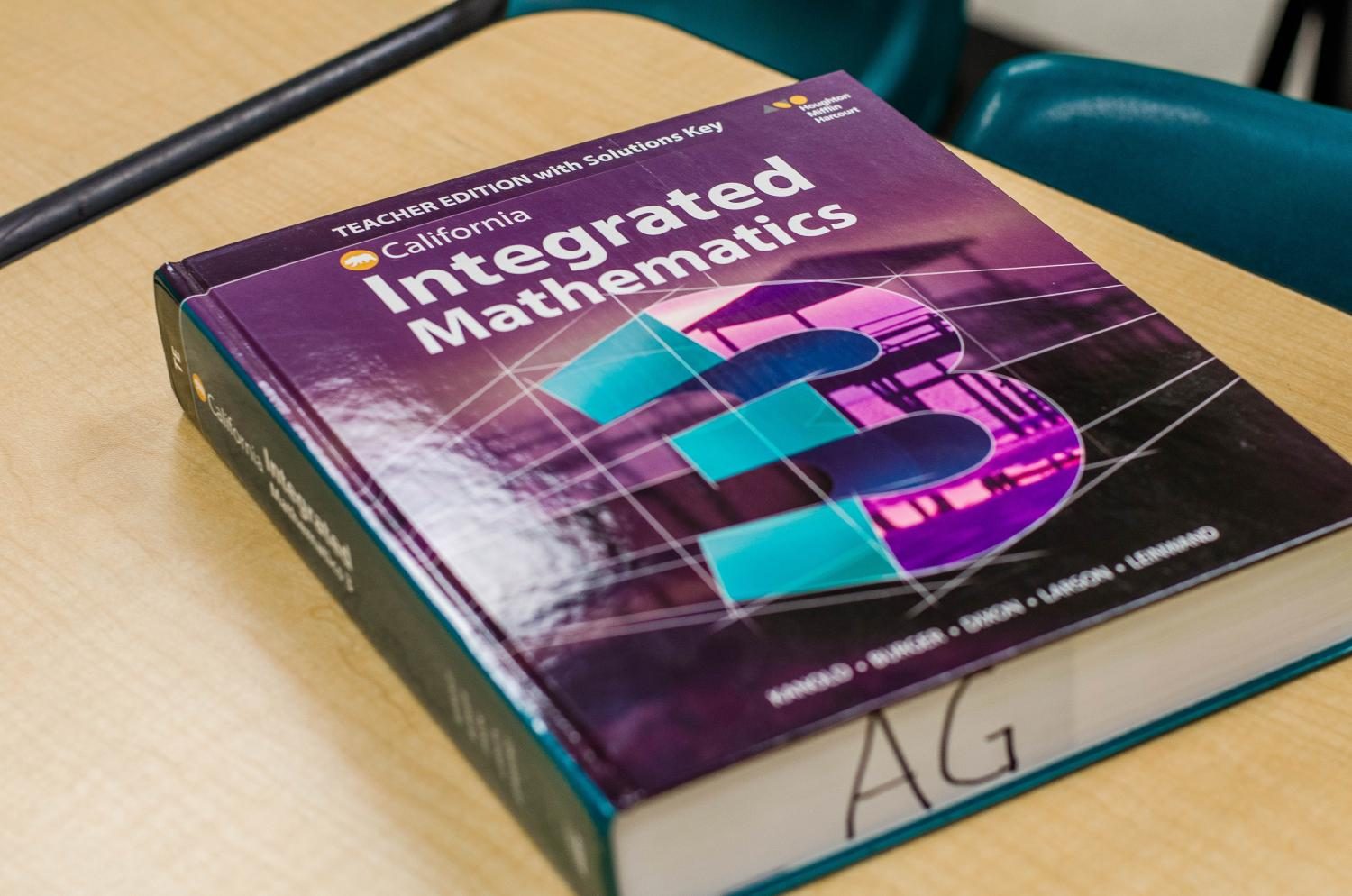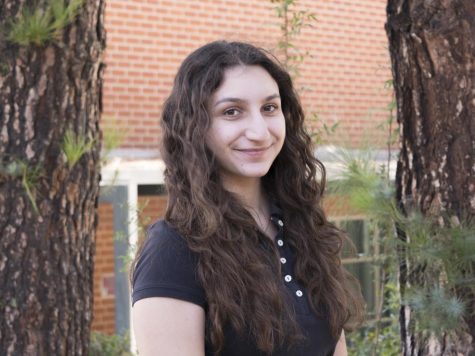GUSD moves towards Integrated Math
A better system of mathematics education is in the works at Glendale high schools
Math textbook that teachers are planning to use for the new course, Integrated Math 3.
As high schools across the United States are changing their standards and adopting a new system of mathematics called Integrated Math, the Glendale Unified School District is also beginning to take steps towards implementing this new system. Integrated Math, sharing similar guidelines and goals with the Common Core State Standards, involves a more conceptual, applicable approach to mathematics. Although the concept of Integrated Math is a great idea, it is too soon to say whether this new system will be as effective as it is intended to be.
Integrated Math at the high school level consists of three courses: Integrated Math I, Integrated Math II and Integrated Math III. These courses take the place of Algebra I, Geometry and Algebra II. Instead of teaching these subjects as completely different entities not related to each other, Integrated Math combines these subjects and aims to teach students how to make connections between them, a smarter way of educating students who will encounter many different situations and problems as the future innovators, engineers, doctors and teachers of generations to come.
In theory, Integrated Math would better students’ understanding of math and make them more apt to solve a wider variety of problems that are applicable to real life. This would, of course, be beneficial to students in the future when they attend university or begin working and are exposed to more difficult problems that require critical thinking skills or understanding the concepts behind the calculations. The GUSD explains the change to Integrated Math by saying on their website that “in the real world, problems do not come in a box labeled ‘algebra’ or ‘geometry.’ By using an integrated math approach, students can decide which skills to call upon to solve a particular problem.”
Students who are introduced to Integrated Math teaching methods will also benefit if they are not as competent in one subject of math, such as geometry, since all three years will be a mix of subjects and no sole subject will determine the student’s grade or level of understanding in the class. Students adept in math, according to the GUSD website, will still be able to reach Calculus BC at Glendale high schools, a pressing issue that has arisen for students in high school now.
Math teachers have had mixed feelings about Integrated Math for years, but with the new outlook on education and the new standards of Common Core, many of them are beginning to see the value in an Integrated Math approach. Teachers who come from other countries where Integrated Math is the norm, such as math teacher Amir Ghavam, are especially fond of the idea since they have experienced this type of education and have seen its benefits. At the same time, however, Ghavam is not an advocate for moving into this new form of math instruction prematurely because of the lack of resources that fit the new standards. More importantly, he believes that the students’ needs are not being properly addressed at this time. “I believe [Integrated Math] is a better approach so long as the material is appropriate for the standards and supports students’ educational needs,” Ghavam said.
It may be hard to implement this new system of math and find the right materials necessary for teaching it, but instituting Integrated Math standards would be a major step towards a better education system, one that would give students the tools necessary to succeed in life rather than just teach them simple calculations that do not relate to real-life applications.














